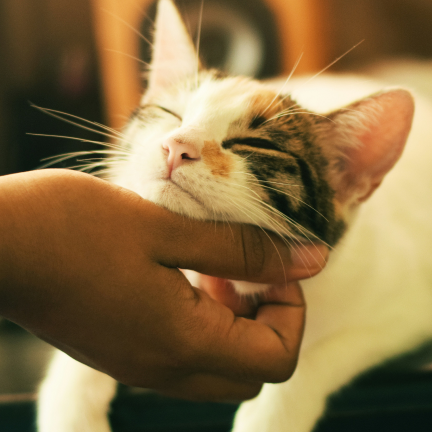Blog:Pain Management for Cats

Pain is a universal feeling for all living things in the world. As humans, we know how to express and manage it correctly. But when it comes to pets, and especially cats, it is a different story. Dogs usually show the pain they are experiencing. On the other hand, cats do not, especially with chronic pain.
Cats are natural predators, and their wild instincts are still a big part of their biology. Like their wild counterparts, they will hide any sign of weakness. Predators know they are a meal for a stronger predator if they look weak. Because of this, cats will often hide their pain, going into hiding if the pain is too much.
How Do You Tell Your Cat Is in Pain?
Other than the apparent pain situations, such as an injury or post-surgery, it is hard to know if your cat is in pain. However, it is possible. The primary tool you have is keen observation. You should pay attention to the tiny changes in their behavior and movement. These are the easiest tell of pain that can inform you best.
Movement
Cats will avoid exerting themselves too much if they are in pain. You may notice that they stop jumping to high places or take many small jumps to places they usually manage with a single leap. Another one is that they may avoid using the stairs and stay in one house level. The journey up the stairs may have become too demanding and painful for them to undertake.
Behavior
Another way to know that your cat is in pain is by changes in its behavior. When cats are in pain, they tend to sleep much longer than usual—although some may become restless if they cannot find a position where they are comfortable. If they start to hide under the couch or the bed, it is a sign they are in pain.
Identifying the exact problems and changes in behavior and movement is vital in determining the leading cause. Ensure you take note of all the changes so the vet will understand the issue when you take your cat to Palo Verde Pet Clinic.
Managing Pain in Cats
Vets usually recommend pain management options based on the cause and the type of pain. Here are common pain management medications that the vet may recommend.
NSAIDs
It stands for nonsteroidal anti-inflammatory drugs. These drugs work well for pain from inflammation. They stop or slow down the production of molecules that cause inflammation leading to pain in the cat’s body. They are best for mild to moderate pain. However, they may lead to kidney, liver, or stomach issues.
Opioids
Vets will prescribe these if the cat is in severe pain, like severe arthritis pain or advanced cancer pain. They include morphine, fentanyl, codeine, buprenorphine, and hydromorphone. They are essential to maintain a quality life if your cat is in chronic pain.
Corticosteroids
These meds work for pain caused by allergies or arthritis. They work by reducing inflammation in your cat’s body. The most common ones are prednisolone and dexamethasone.
For more about pain management for cats, visit Palo Verde Pet Clinic at our office in Yuma, Arizona. Call (928) 224-3131 to book an appointment today.




